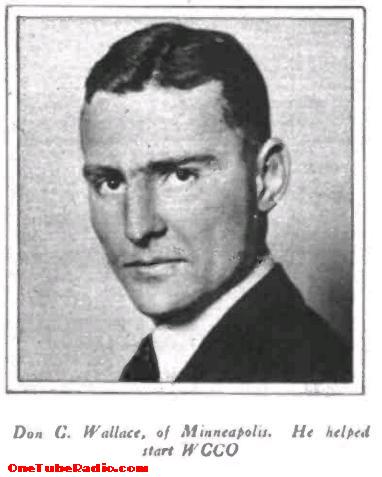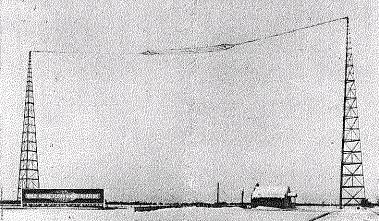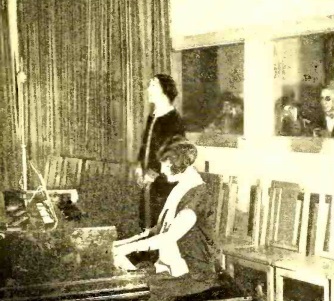 I always knew that reknowned Amateur Radio operator Don Wallace, W6AM, had a background in Minnesota radio history. For example, I knew that he was involved with the University of Minnesota Amateur Radio Club, and I knew that he was involved with the Minnesota Wireless Association, whose antenna was a prominent feature on Minneapolis City Hall in 1915.
I always knew that reknowned Amateur Radio operator Don Wallace, W6AM, had a background in Minnesota radio history. For example, I knew that he was involved with the University of Minnesota Amateur Radio Club, and I knew that he was involved with the Minnesota Wireless Association, whose antenna was a prominent feature on Minneapolis City Hall in 1915.
But I never knew the role that he played in the founding of WCCO radio. His role is detailed in a profile of WCCO which appeared in the September 1925 issue of Radio in the Home.
An earlier post recounts how WCCO first came on the air in October 1924. Its predecessor, WLAG, first came on the air in 1922. One of the problems encountered by WLAG before its demise was the transmitter location. The 500 watt transmitter was located in the city. When it was on the air, it made listening to more distant stations impossible. But when it was off the air, the listeners with crystal sets weren’t able to get anything. When a major investor in WLAG pulled its support, the station was off the air.
A group called the “Northwest Radio Trade Association” took the lead in getting a new station on the air. Obviously, the lack of a radio station put a dent in radio sales. In particular, without a local station, crystal set owners were left with nothing to listen to.
By this time, Wallace was employed by General Electric. As he recounted in a 1984 interview, when offered a position right out of college, he was offered a salary of $100 per month. He noted that his wife made more than that as a teacher, and that he could make more working as a telegrapher. GE was unwilling to budge very much, but they upped the offer to $125, and also offered him 1% of his department’s sales. Within a few months, he was making more than the company’s president.
Wallace was also the president of the Northwest Radio Trade Association in 1924, and took the lead in organizing a new station for the Twin Cities. Along with the group’s secretary, H.H. Cory, he proposed a more powerful 5000 watt station about 20 miles away from the Twin Cities. This would result in a signal powerful enough for the crystal set owners, but far enough away so as to allow owners of more powerful sets to pick up distant stations.
The plan met with some initial skepticism, as local businessmen noted that the area couldn’t support 500 watt WLAG, and they were hesitant about investing in a 5000 watt station. But eventually, Washburn-Crosby pledged to buy the station, provided that additional subscriptions of $50,000 per year from both Minneapolis and St. Paul could be secured.
As proposed by Wallace, the transmitter was located away from both Minneapolis and St. Paul, at its current site in Anoka. Studios were located in both Minneapolis and St. Paul, and to avoid any rivalries, announcers alternated announcing the location as “Minneapolis-St. Paul” and “St. Paul-Minneapolis.”
Wallace graduated from high school in 1912. He first became involved in amateur radio in 1910, prior to licensing, and got his first license in about 1912. He is listed in the 1913 call book as 6OC at 1431 Linden Avenue, Long Beach, California.
He served as a radio operator during World War I, and after the war, was assigned to serve as the radio operator for President Wilson at Versailles. He came to Minnesota after the war to attend the University of Minnesota. In Minnesota, he was licensed as 9XAX and 9ZT. In the 1922 call book, he is also listed as 9DR at 1830 Stevens Avenue in Minneapolis.
Read More at Amazon
Click Here For Today’s Ripley’s Believe It Or Not Cartoon ![]()


